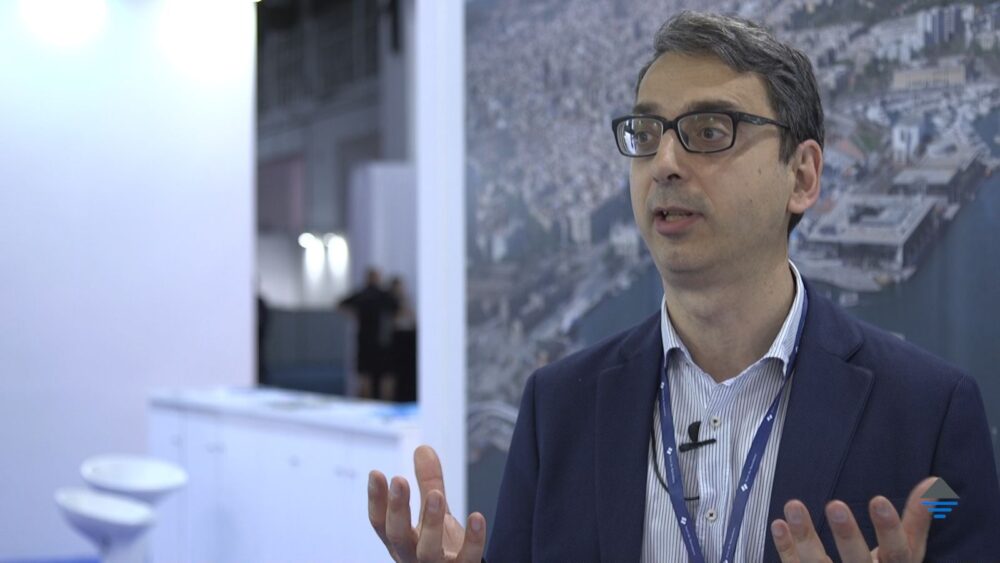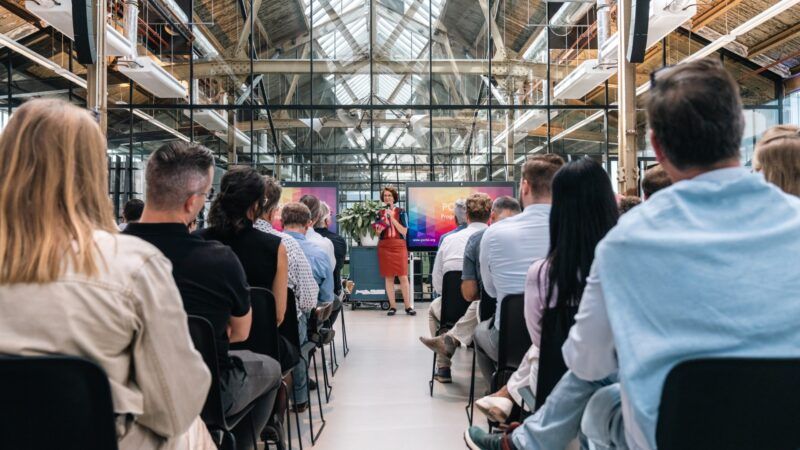 Carles Rúa is the Strategic Projects and Innovation Manager at Port de Barcelona. [Image: Port de Barcelona]
Carles Rúa is the Strategic Projects and Innovation Manager at Port de Barcelona. [Image: Port de Barcelona]
“We Have To Think ‘Door To Door’ Not ‘Port To Port'”
Carles Rúa is Strategic projects and innovation manager at the Port of Barcelona. Taking advantage of SIL 2018 (held in Barcelona), we spoke with him about the innovation model used by ports that hope to stay competitive.
 Carles Rúa is the Strategic Projects and Innovation Manager at Port de Barcelona. [Image: Port de Barcelona]
Carles Rúa is the Strategic Projects and Innovation Manager at Port de Barcelona. [Image: Port de Barcelona]
Why is it so important for ports to adopt an innovation model?
Because business is changing. We're witnessing the transformation of the logistics industry and, at the same time, new technology is bringing about opportunities that were unheard of before. Plus, the economic context is also changing and ports are a key tool for the economy. Either they adapt to the new scenario or they'll stop doing their job as defenders of the economy and international trade.
Over the coming years, in which areas do you think ports will see the greatest technological innovation?
In my opinion, the areas most affected by innovation will be three: sustainability, digitalisation and automation. The main one is sustainability. By using new fuels, load-optimisation tools to limit empty trips and, of course, adapting land-transport means and port machinery (which will also evolve towards alternative fuels), we are going to effectively reduce the impact ports have on the environment.
In terms of digitalisation, ports have already made a significant effort in recent years to transform what used to be the flow of physical documents into electronic flows using Port Community Systems, for example. Now it's time to take a step associated with the concept of Port 4.0 or Logistics 4.0 and start generating information that is useful to users through technology, like sensors and cameras, for example.
Finally, the other area that will be revolutionised is automation. Automatic ports, driverless vehicles, autonomous ships... These things are a bit further off still but, pay attention, the transformation will be radical in the next few years.
What needs arising from the digital transformation can ports cover?
We have to be able to provide information our clients need to make decisions. The port has to provide logistics operators, or importers and exporters, the information they need, and is sufficient, to make decisions in real time on what to do, what actions to take, with their containers when they reach the port grounds.
"The areas most affected by innovation will be three: sustainability, digitalisation and automation."
Problems like traffic and lane management are two areas that need improvement. What can be done in this regard with innovation?
The best would be the possibility of moving goods out of the port by rail and, in this case, we aren't talking about innovation in technology but in business model, to adapt rail transport to our users' needs. Nevertheless, as road transport will continue to be dominant, here automation levels will be a relevant factor: automatic gates to make entering easier, time slots to plan when lorries arrive, the ability to notify carriers of the status of the port so they can make decisions, etc. It's a matter of transforming the big data a port generates into useful information in real time and helping operators make decisions in real time based on this data. Plus, we can't forget the prediction capacities artificial intelligence gives us. Managing business intelligence will be fundamental in the future to be able to make predictions based on how a specific situation is evolving and, from there, get out ahead of any problems that may arise. Here the port authority plays a very important role, as it is the organisation with access to all of this data and the most prepared to make it available to users. Shipping lines want a port to be a pit stop. Having all this information allows them to make decisions while sailing that they can use to optimise resources.What role does the transformation of road transport by megatrucks and platooning technology, among others, have to do with keeping ports competitive?
The road-transport sector is changing a lot and we're soon to see a true disruption with the arrival of driverless vehicles, connected vehicles, smart roads, etc. For ports, roads will continue to be dominant because most of our clients are within a limited radius, so this quickly evolving area will also lead to important changes for port facilities.![Urban ports, such as Barcelona, must take into account their impact on the immediate environment. [Image: Port of Barcelona]](https://piernext.portdebarcelona.cat/wp-content/uploads/2018/06/piernext_portdebarcelona_innovacion_puerto-urbano.jpg)
Urban ports, such as Barcelona, must take into account their impact on the immediate environment. [Image: Port of Barcelona]





